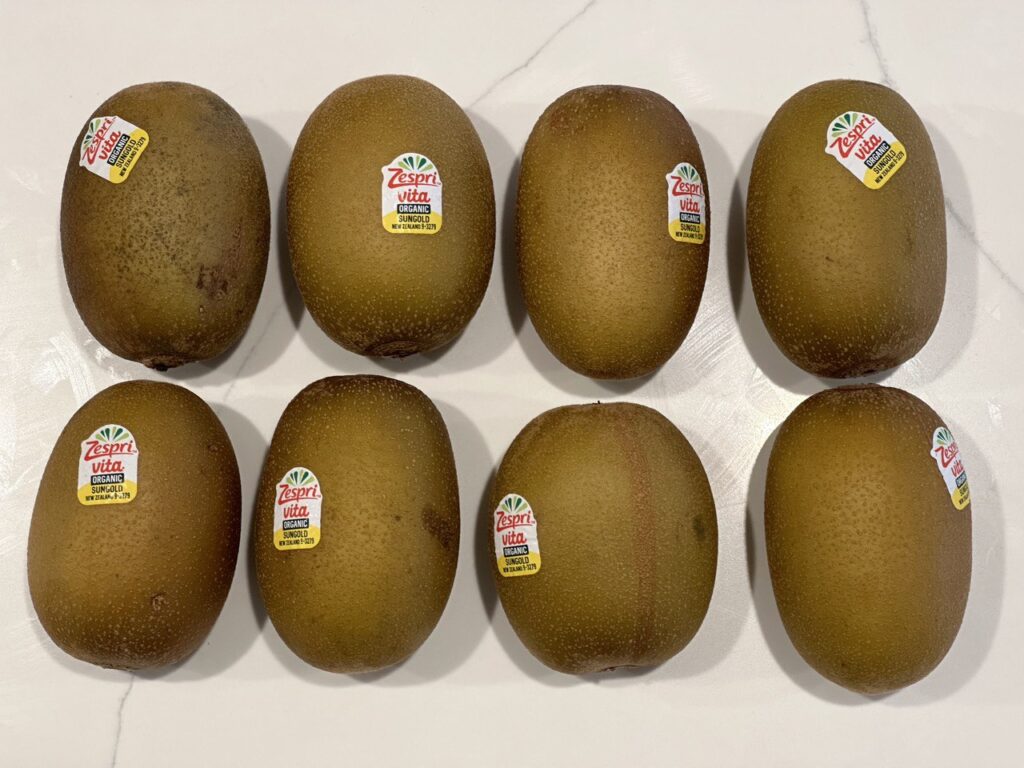
In May 2023’s What’s been happening in the markets article we give our initial thoughts on Sharesies’ massive KiwiSaver announcement, check out some Aussie investment services that have just launched in New Zealand, and cover this month’s market movements.
This article covers:
1. Product updates
2. Market Movements
3. What we’ve been up to
1. Product updates
Sharesies introduces a self-select KiwiSaver option

This month Sharesies announced that their upcoming KiwiSaver scheme will give investors the ability to select and invest in individual shares and ETFs. This is significant news, as traditionally KiwiSaver schemes don’t allow you to pick individual stocks (unless you were a member of a highly specialised scheme like Craigs KiwiSaver), so this move is sure to make self-select KiwiSaver more accessible to everyday investors. At launch self-select options will include around 40 NZX-listed ETFs and 60 NZX-listed shares, with US and Aussie shares coming later.
Guardrails
Many fear that Sharesies’ self-select KiwiSaver opens the door for people to blow away their house deposit on meme stocks or jeopardise their retirement savings with bad stock picks. However, Sharesies will have a number of protections in place to reduce the likelihood of this happening:
- Your self-select picks can only make up a maximum of 50% of your KiwiSaver portfolio.
- The other 50% or more of your KiwiSaver portfolio must be invested into one of five previously announced “base funds“. These are your traditional diversified KiwiSaver funds with Growth/Balanced/Conservative options managed by SuperLife, Pie Funds, and Pathfinder. A cash option is coming later.
- Each self-selected share/ETF can only make up a maximum of 5% of your entire portfolio.
- Self-selecting shares and ETFs is completely optional. You can invest 100% of your KiwiSaver into a base fund if you like.
- Investor education will be incorporated into the offering and include warnings about trading based on emotion, and encouragement to seek financial advice.
So fortunately people can’t allocate their whole KiwiSaver to GameStop or crypto related companies. And even if you made poor investment picks, the damage is limited to 50% of your KiwiSaver portfolio.
Fees
Fees for Sharesies KiwiSaver will vary between their base funds and self-select investments. For their base funds, they charge a management fee, which ranges from 0.47% to 1.47%.
If you opt-in to self-select, the following fees will apply to only the self-selected portion of your KiwiSaver portfolio:
- Admin fee of 0.15%.
- Transaction fee of 1% whenever you buy or sell any shares or ETFs. This fee drops to 0.1% for any amounts over $1,000, however, investors are unlikely to ever reach a transaction size of this amount unless they’re transferring their entire KiwiSaver balance in or out of Sharesies.
Our initial thoughts
We like that Sharesies is innovating in the KiwiSaver space, making the ability to self-select shares so much more accessible. But we don’t think it’ll be a great option for the vast majority of people:
- Poor selection of base funds – Their base funds have relatively high fees, and there’s no aggressive option. Therefore you’d need to compromise at least 50% of your portfolio (by switching from a better provider into these potentially inferior base funds) in order to get the ability to self-select.
- People don’t know how to build investment portfolios – Much of the wider public have no idea how to construct a well diversified KiwiSaver portfolio that aligns with their financial goals. These people would likely be better off sticking with a pre-diversified agressive/growth/balanced etc. fund, or self-selecting stocks with the assistance of an investment adviser (which Sharesies doesn’t offer).
- Is stock picking worth it? – Even if you do know how to construct a good investment portfolio out of individual shares and ETFs, that doesn’t guarantee you’ll outperform the market. Even fund management professionals whose full-time jobs are to research and pick stocks, tend to underperform index funds.
- Self-select is currently limited to NZ shares and ETFs – While this might be handy if you’re wanting to increase exposure to a specific NZ share or ETF, this limitation could encourage too much exposure to the NZ market (especially when their base funds will already have plenty of domestic investments). This will get better once US and Aussie shares are introduced.
- ETFs have the same guardrails as individual companies – The maximum allocation of 5% to a single company exists for a good reason. It prevents someone from putting say 30% of their KiwiSaver into Auckland Airport shares. Unfortunately the same 5% guardrail applies to ETFs. However, the diversified nature of ETFs (which could easily contain tens or hundreds of companies) means that a 5% limit might not be as necessary (perhaps a 10% limit for ETFs might work better?).
We’ll be sure to write up a full review when Sharesies KiwiSaver is officially opened to the public.
Superhero launches in NZ

Superhero is an Aussie investment platform who launched to New Zealand customers this month. They’re a broker who currently provide access to the Australian and US sharemarkets, with the NZX expected to be added to the platform in the coming months.
As for fees, Superhero charges a brokerage fee each time you buy or sell ASX shares, but no brokerage fees for US shares:
- ASX brokerage fee – $5 AUD per transaction
- US brokerage fee – $0 + small regulatory fees for sell orders.
They also charge a foreign exchange fee of 50 bps, but this does not equate to 0.50%. This fee is calculated slightly differently from Hatch and Sharesies (who add a 0.50% margin onto the exchange rate) – Instead Superhero calculate their FX fee by adding a flat $0.005 AUD/USD to the exchange rate. As a result:
- Changing NZD to AUD – The fee equates to $0.50 AUD per $100 NZD converted. Assuming an exchange rate of 0.93, that’s an effective fee of 0.54%.
- Changing NZD to USD – The fee equates to $0.50 USD per $100 NZD converted. Assuming an exchange rate of 0.63, that’s an effective fee of 0.79%.
With so many options for New Zealanders to invest in US shares these days, which broker is the best? Here’s a comparison of the brokerage + FX fees for various investment amounts across the different platforms:
| $5 | $100 | $500 | $1,000 | $5,000 | |
| Superhero | n/a | $0.79 | $3.95 | $7.90 | $39.50 |
| Sharesies | $0.12 | $2.39 | $7.50 | $10 | $30.00 |
| Sharesies (plan) | $1.92 | $2.39 | $4.39 | $9.41 | $34.45 |
| Hatch | $3.03 | $3.50 | $5.50 | $8.00 | $28.00 |
| Stake | $5.00 | $5.00 | $8.00 | $13.00 | $53.00 |
| Interactive Brokers | $3.00 | $3.00 | $3.00 | $3.00 | $3.00 |
| Tiger Brokers | $2.00 | $2.34 | $3.74 | $5.49 | $19.49 |
In general Superhero’s zero brokerage fee and reasonable FX fee could make them better than the likes of Sharesies for investing small amounts. However, their FX fee starts getting relatively chunky when investing large amounts. In these cases Interactive Brokers (or even Sharesies and Hatch) would work out cheaper than Superhero. You can find our full Superhero review below:
Further Reading:
– Superhero review – A Sharesies killer?
New Betashares index funds

Betashares is another Aussie investment service, shaping up to launch in New Zealand in June. Over in Australia, Betashares is a major ETF manager (whose funds can already be accessed by Kiwis through the ASX). They’ll initially be offering five index funds in NZ, and being locally domiciled funds they’ll be structured as PIEs and save Kiwi investors from having to pay currency exchange fees (which you’d pay if you wanted to access their Australian domiciled equivalents).
However, unlike Betashares’ Australian funds, their New Zealand equivalents will be unlisted (i.e. they won’t be ETFs listed on the NZX). It’s not yet known which platforms these funds will be available on, but the likely contenders are InvestNow and Flint. The funds are (with annual management fees in brackets):
Australian shares:
- Australia 200 Fund (0.23%) – Invests in the ASX 200, representing the 200 largest companies listed on the ASX.
- Australian Sustainability Leaders Fund (0.67%) – Invests in around 80 sustainable and ethical Australian companies. Notably excludes investment into the big 4 banks and mining companies.
Global shares:
- Global Sustainability Leaders Fund (0.77%) – Invests in around 200 global companies, including those that have been identified as “climate leaders”.
- Global Quality Leaders Fund (0.49%) – Invests in around 150 global companies based on their “quality score”. This score takes into account a company’s return on equity, debt-to-capital, cash flow generation ability, and earning stability.
Global bonds:
- Australian Investment Grade Corporate Bond (NZD Hedged) Fund (0.34%) – Invests in around 50 Australian corporate bond issues.
Betashares’ initial fund offering is quite Australia heavy. That’s a good thing if you’re intentionally looking to invest in the Aussie market, with Smartshares being the only other local provider offering Australian index funds. But those hoping that Betashares would offer compelling international options are out of luck, with their two global funds being quite expensive. While the Quality Leaders Fund is somewhat unique, there are a number of other sustainable global index fund options that have much lower fees (such as Simplicity’s Global Share Fund or Kernel’s Global ESG Fund).
Other Sharesies updates
In other Sharesies news, it seems like they’re continuing to work hard in adding more features to their platform:
- US after-hours trading – Previously orders for the US market would only trade during regular market hours (9:30am to 4pm US Eastern Time). Now Sharesies allows customers to opt into extended market hours which allows your orders to trade during pre-market (4am to 9:30am ET) and post-market (4pm to 8pm ET) times. This feature doesn’t really add anything special for long-term investors (who usually shouldn’t be interested in precisely timing the market), but may be useful for traders who may want to take advantage of the greater volatility of after-hours trading, being able to quickly trade in reaction to news and company announcements (which is often released after-hours), and the convenience of trading at hours that are better aligned with NZ time.
- Price notifications – Sharesies has also added the ability to receive push notifications (through their iOS and Android apps) for when a particular asset you’re interested in reaches a certain price. Again, this feature isn’t particularly useful for long-term investors given share prices and timing the market is so much less critical over the long-term.
2. Market Movements
Here’s how the markets performed to 31 May 2023, in both their local currencies and in NZ dollar terms:
| May 2023 returns Local currency | May 2023 returns NZD | |
| NZ shares (S&P/NZX 50) | -1.72% | -1.72% |
| Australian shares (S&P/ASX 200) | -2.98% | -2.18% |
| US shares (S&P 500) | 0.29% | 2.79% |
| Bitcoin | -4.86% | -1.11% |
This month was pretty unexciting with no major movements either way in the markets. We are still up for the year so far despite the continued uncertainty around interest rates, US debt ceiling issues, and whether the economy can avoid a bad recession.
| 2023 YTD returns Local currency | 2023 YTD returns NZD | |
| NZ shares (S&P/NZX 50) | 2.96% | 2.96% |
| Australian shares (S&P/ASX 200) | 0.75% | 1.40% |
| US shares (S&P 500) | 8.86% | 14.79% |
| Bitcoin | 63.90% | 72.82% |
The Official Cash Rate (OCR)
On 24 May the Reserve Bank of New Zealand reviewed the OCR, and unsurprisingly increased it by 25 basis points to 5.50% in their efforts to fight against inflation. But perhaps the surprising part of their announcement is that they hinted 5.50% may be the peak of the OCR. While inflation is still high, and the government’s latest budget is feared to be inflationary, there are many reasons to suggest that further OCR increases aren’t needed:
- Consumer spending is falling, and people are generally expecting inflation to ease.
- The currently high immigration has potential to increase inflation, but also helps to ease labour shortages.
- Previous OCR increases haven’t fully filtered through to the economy yet. Some people are still on fixed term mortgages at lower interest rates, and won’t feel the effects of higher rates until they roll off those terms.
The OCR has a strong influence on mortgage rates and savings interest rates, so we may not see much more increases in these over the coming months. However, the RBNZ doesn’t see interest rates falling until the latter half of 2024, and there’s also the risk that the OCR could still go up further (e.g. if inflation were to remain persistent), or perhaps even start falling sooner than expected. In fact a number of bank economists are predicting that the OCR won’t peak until it reaches 5.75% or even 6%. Only time will tell which economist is right, so we wouldn’t be basing investment decisions purely on any of their predictions.
3. What we’ve been up to
In case you missed them, here’s the articles we published over the month:
- Superhero review – A Sharesies killer?
- Sharesies Save, Kernel Save, Squirrel On-Call – Good places to keep your money?
It’s been a relatively boring month for us in terms of investing, pretty much just drip feeding money into index funds. That’s despite having a mortgage to pay off now… We personally think it’s still important to build up wealth elsewhere instead of having all of it tied up in a single house.
Outside of investing, we’ve just been working, doing projects around the house, and cooking and eating a lot. And we should probably do more exercise to make up for that…



As usual thanks for reading and your ongoing support! Have a great King’s Birthday weekend and happy investing for the month of June.
Follow Money King NZ
Join over 7,300 subscribers for more investing content:
Disclaimer
The content of this article is based on Money King NZ’s opinion and should not be considered financial advice. The information should never be used without first assessing your own personal and financial situation, and conducting your own research. You may wish to consult with an authorised financial adviser before making any investment decisions.
Hi Chris – love your content! I enjoy my weekly read & appreciate your simple, informative comments & reviews.
Keep up the good work!
Great write up. The Sharesies Kiwisaver is a good start but it really needs a cash base fund for recessionary times and the ASX or US markets to allow a more diversified investment portfolio. Once they do those, then based off reasonable fees this could be a solid choice for many. I’d certainly jump on board. You also mentioned that for ETF / Share transactions that amounts over $1000 would be at 0.1% but not many would hits this.. Don’t you only need a 20k Kiwisaver to transfers 5% @ 1k to meet this?
Yes, transferring a $20k+ portfolio could get you over the threshold. Though note only the amount exceeding $1k gets the cheaper 0.1% rate.
For everyday contributions it is unlikely anyone would ever go over the $1k mark.
Hi Moneykingnz, how about writing an article comparing Betashares NZ’ funds with their respective Smartshares’ ETFs, in special, a comparison of Australia 200 and AUS (in terms of components, fees, taxation, etc)
PS: you have the best content for the DIY investor in New Zealand
regards
Arthur
Let’s see how much interest there is in Betashares, and if there’s enough we’ll do a review including a comparison with similar funds. Thanks